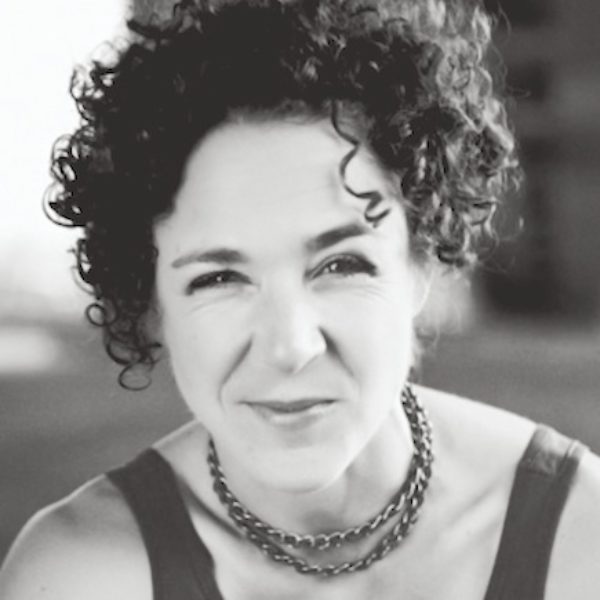
Image by Hernán Piñera.
The Spaces Between the Consonants
On the morning of Christmas Eve, I had a wonderful coaching session — two hours on the phone with a writer on the other side of the country who has been in a few of my writing groups and is now exploring how to sustain a longer piece of writing, maybe even a book. At one point towards the end of our time together, I joked that if our phones were tapped, someone might have thought we were CIA agents speaking in code, dipping as we did into so much metaphor.
I love conversations like these, where a kind of intuitive language merges with the literal, and rather than missing each other’s meanings, there’s an easy understanding. This person had recently been reading about hermeneutics, “the science of interpretation, especially of the Scriptures.” In turn, I told her about the Jewish version of this, pardes, and we dove headlong into how these might apply to her writing process.
Pardes is “Jewish exegesis,” and exegesis, for those of us who may be, ahem, rusty on our SAT words, means: “critical explanation or interpretation of a text or portion of a text, especially of the Bible.”
Pardes is an acronym, and each of the Hebrew consonants stands for a word that is one level of reading a text. Rather than attempt to summarize this, here’s the rest of Wikipedia’s basic explanation:
- Peshat (פְּשָׁט) — “surface” (“straight”) or the literal (direct) meaning.
- Remez (רֶמֶז) — “hints” or the deep (allegoric: hidden or symbolic) meaning beyond just the literal sense.
- Derash (דְּרַשׁ) — from Hebrew darash: “inquire” (“seek”) — the comparative (midrashic) meaning, as given through similar occurrences.
- Sod (סוֹד) — “secret” (“mystery”) or the esoteric/mystical meaning, as given through inspiration or revelation.
Each type of pardes interpretation examines the extended meaning of a text. As a general rule, the extended meaning never contradicts the base meaning.
The Peshat means the plain or contextual meaning of the text. Remez is the allegorical meaning. Derash includes the metaphorical meaning. And Sod represents the hidden meaning. There is often considerable overlap, for example, when legal understandings of a verse are influenced by mystical interpretations or when a “hint” is determined by comparing a word with other instances of the same word. (As an aside, if I could spend the rest of my life deep in the study of kabbalah, or Jewish mysticism, where each and every letter and number is a portal to hidden meanings and messages, I’d be pretty much a pig in shit. A kosher pig, of course.)

Back to pardes. Twice in the last week, I’ve found myself referencing this way of reading and interpreting writing with friends and also folks in my writing groups. To make matters even more beautiful, the word pardes itself means “orchard” in Hebrew. A gathering of trees, of fruit, a growing cycle, the roots and branches themselves and the whole place — close your eyes for a moment and picture an orchard — rife, too, with associative stories, memories, possibilities, hints, and even secrets. What kind of orchard do you see?
Gertrude Stein’s famous “A rose is a rose is a rose,” for example, is peshat. It is what it is. Not everything represents something else. And yet, good lord did I ever get lost in the “Variations by Others” section of this page. Sometimes it’s the simplest statements that become the most far-reaching and unforgettable, easy as they are to reshape, to play with, to riff off of.
Work with the essentials before going for some deeper meaning; just tell a simple story, record a single memory, jot down an image that made an impression. The layers of storytelling, of symbolism, and even of secrets, will reveal themselves if you are patient.
Imagine approaching the orchard. Crouching at the perimeter. Maybe you see yourself as a child, excitedly going after the low-hanging fruit you can reach without a grown-up’s help. Or you are running, playing tag with a sibling. Or you are hiding, hoping they won’t see you; you can see your shallow breath on the air and fear that even that will reveal your presence. This space could be one of delight or of menace. You might see a fox or a rabbit or even a deer. A squabble of birds in high branches.
The Clearing
I watch over as the child sleeps.
Like an eagle, I circle the roofline,
creating a nest of blessings she cannot see.Her eyes look like closed crescents
and I notice her dreams flickering
as a soft howl comes through the open window.
I whisper to her, sing
the lullaby of the girl and the crone
laying down together in the overgrown garden,
seasons piling up around us
like a wall of stones we can read with our hands.Then the breeze picks up its whistle
and the burnt leaves begin to hum,
and the breath that comes from the ancient well
moves us, through these crowded woods
where words touch,
where clouds land and lift,
where limbs cross and carry their weight in water,
binding us to what our bodies know.It is here that we will finally rise.
Here, where the girl will wake
when that warm gust comes,
filled with hints
that she will only guess the answers to.
I live my life in the spaces between the consonants, moving between things as they are and that hint of what they may contain. There are wide-open moments of everything being illuminated, like Christmas’ full moon, the likes of which we won’t see again for 19 years. Always though, it requires a soft focus and a broad lens and a kind of presence that comes out when nothing is forced or broken into, as if the truth itself has a spare key and will let itself in while we’re sleeping, leaving gifts on our pillows.
I woke to my wife reading a book about grace beside me. She read me the story of Cary Grant, and how his seemingly effortless ease was the result of intense study and practice, and how he discovered these themselves because of tremendous loss. At nine, his mother vanished from his life without a word or a trace or an explanation, and he wouldn’t learn for decades that his father had placed her in a mental institution. At 13, he found his way to a theater troupe that became his family.
A rose is a rose is a rose, but sometimes so much grief and joy and triumph and tribulation lead to that moment of pure seeing. It’s like the cost of admission. Sometimes worth every penny, sometimes you curse the gods wanting your money back.
Oh, life. What if nothing is hidden? “They” say God works in mysterious ways. Is it true? Or is God plain as day and night and day and night and a rhythm of appearing and disappearing, rising and sinking, expanding and contracting, as predictable as the tide under the pull of the moon? This morning as I stretched into waking, Mani looked over at me and said “I adore you.” And all I could say was what my whole body knew: “That’s exactly what I’ve always wanted.”
As a teenager, I wanted to be adored, but not objectified, which was my experience of how boys and men saw me. I developed a gaze that I believed said: “There is more to me than you see.” And it worked, as magnet, as repellent. Come close, go away, come close, go away — this was my birdsong, my sharp beak: A beautiful visage, an impenetrability, a yearning, and a secret.
The orchard may be filled with hints and questions, riddles and invitations written on bark and bush. It might be a prelude or an afterword, and an entire series of stories only you can tell. To close your eyes is one way of knowing, and to open them another. What if both are true, and you can climb the ladder between worlds like a stealth and nimble traveler?
After a three-hour nap the other day — the girls had left the previous morning for a week with their dad and Christmas in Vermont with their grandma — I got up just in time for a balmy late-afternoon walk. The sun was just setting and the colors in the Western sky were breathtaking — deep pinks and oranges.
A nearly full moon was on the rise as I headed up the hill towards town, and it felt good to move my legs after a day of sitting and lying down. I stopped at CVS to pick up a few six packs of Ensure for Mani, then again in front of the Catholic church in town to snap a picture of Santa and a little girl in her matching outfit. The temperature really was more March than December; I even had to tie my sweater around my waist after a few minutes in motion.
One thing I love about Christmas is that it’s what I imagine Shabbat must feel like in Israel, where I have still never been except in dreams. All is quiet that meets the eye. I glanced down a dead-end side street and saw someone walking in the dense fog. Peshat, Remez, Derash, Sod.

What do you see? A man, a woman, a lone wolf, a messenger, a threat, a broken heart?
These days I want to take my time naming what I know to be true, and embracing the unknown, too, beckoning the unseen and the secrets to show themselves in space and time. To see what is apparent and speak what is true. To accept what is, knowing that that very acceptance is a magnificent gateway and a simple wooden door at once, to loving this life and living it fully. And to know, too, that there is more than meets the eye.
Here we are, all in and all out, inhabited by spirit and exhibiting as much grace as we can muster. It’s a good practice. It’s a good orchard. An acronym bridging me into a new year, as the old one crumbles behind.

Share your reflection